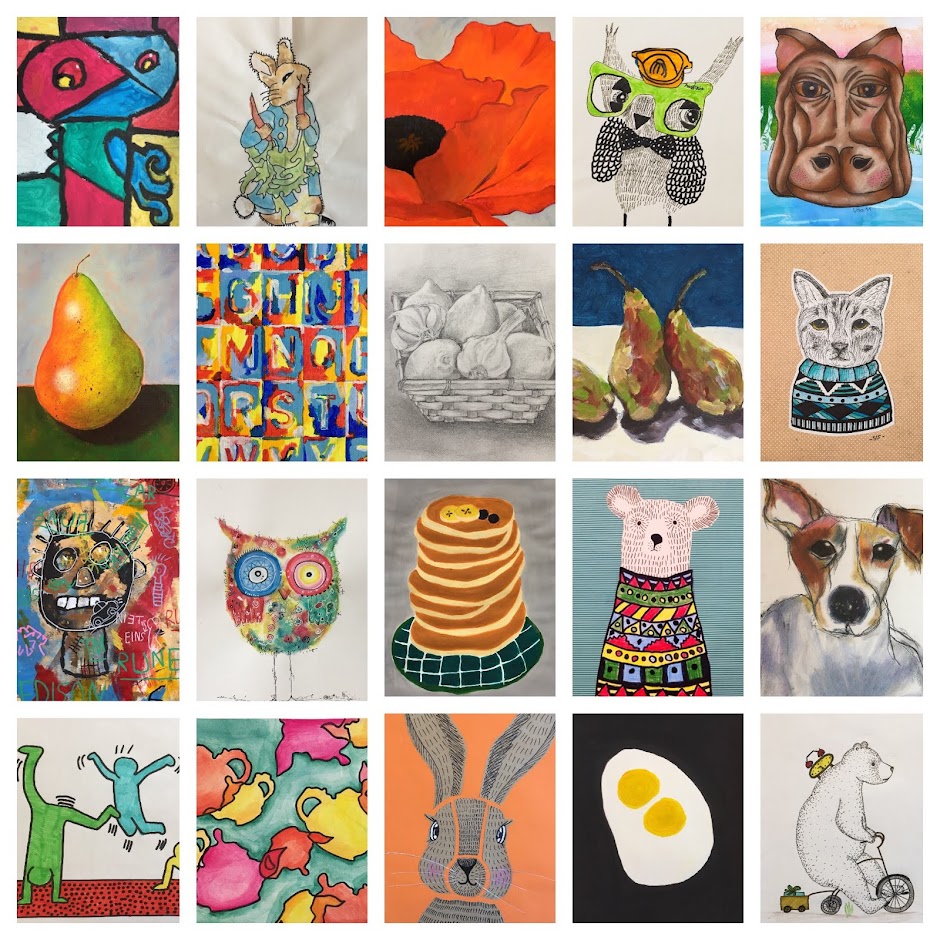Since I was working with a young group (7-9 year olds), and since oil pastels and soft graphite can be very messy, I took a few different approaches to the project than did the original artist, in order to ensure a clean and neat finish.
 |
| Teacher Sample |
Process:
Borders: To begin, we taped down our borders with artist or washi tape. We love the crisp clean border it reveals when done.
Colors: Since my students are right handed, we worked on the day half first, which is on the left side of the paper. This will prevent them from dragging their hands across their paper and smudging their work. Students picked 3-4 warm oil pastel colors, starting with yellow and going to orange. We made sure to clean our oil pastels on scrap paper before applying it to our drawing paper, to prevent unwanted color smudges.
Taping off the two halves: We eye-balled the middle of our paper, drew a faint line down the middle top to bottom. This separates our day half from our night half. To keep out night half clean and free of warm color, I had the students place a piece of washi tape along the outside of this line, on the night side of their paper. This will prevent colors from crossing over into the other side. A small trick that keeps both our sides super neat. We did this same thing also when coloring the night side (so washi tape was applied along the center line on the inside of the day half.)
Coloring: Students began with the yellow and lightly colored the bottom third or quarter with their lightest color (yellow). Then the middle color (darker yellow or lighter orange), and lastly, the darkest color (darker orange). We applied the color lightly because this way, it is much easier to blend and won't result in thick, sticky blobs of pastel which are difficult to blend out.
Blending: Taking a sturdy tissue paper that we folded as many times as we could into triangles, we careful blended our colors, starting at the bottom with our lightest color and working our way up to our darkest color. This is tough on the arms, but working in a circular motion did the job efficiently.
Then we moved on to the blue, or the night, half in the same approach (after switching our centered line tape over to the day half first).
Moon and sun: Before drawing our tree, I had the students draw in their moon and sun. I did this because I knew if I saved this step for last, their tree branches might reach all the way into the top corners of the paper, making it impossible to fit in the moon and sun later.
We used a white glass marking pencil for the sun, repeatedly drawing with it in a circular motion until we had a soft white sun. The half moon was drawn with a white paint pen (we used Posca).
Drawing: Once both sides were colored and blended we began with our super dark 9B graphite pencil. The youtube artist uses a 10B graphite, but I could not find these anywhere. (9B does the job, and I think an 8B would likely work as well).
 |
| Coloring the ground |
 |
| Progress Day 1 |
Finished touches: As a final touch, we added a few birds to our day half (graphite) and stars (white paint pen) to our night half.
Lastly, we wiped down our hands with baby wipes before removing the tape from our borders.
Fun project with bold results!
This project took roughly one and a half 90-minute classes.
* Student top right missed the first class, so she made 'half' a drawing.
 |
| 7-9 year olds |













